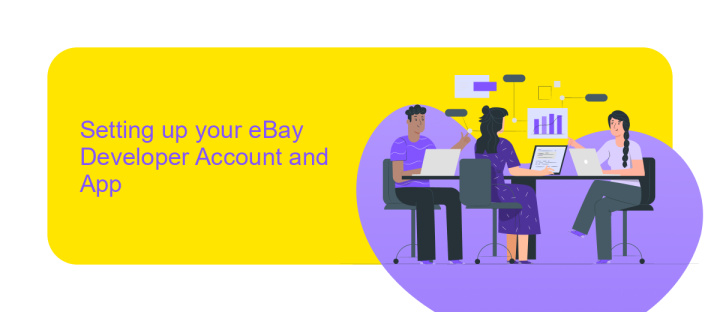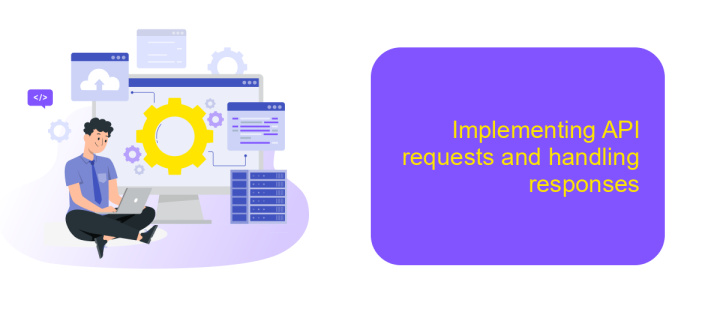Ebay API Integration
Integrating eBay's API into your application can unlock a plethora of opportunities for enhancing e-commerce functionality. This powerful tool allows developers to seamlessly access eBay's vast marketplace, enabling features such as real-time inventory management, automated order processing, and personalized shopping experiences. By leveraging eBay's robust API, businesses can streamline operations, improve customer satisfaction, and ultimately drive sales growth in today's competitive digital landscape.
Introduction to eBay API and its benefits
The eBay API offers a powerful toolset for developers looking to integrate with one of the world's largest online marketplaces. By providing a seamless connection to eBay's platform, the API allows businesses to automate various processes, enhance their listings, and optimize their operations. Whether you're managing inventory, processing orders, or analyzing market trends, the eBay API provides the flexibility and efficiency needed to streamline your e-commerce operations.
- Access to real-time data for better decision-making.
- Automated inventory and order management.
- Enhanced search and listing capabilities.
- Improved customer experience through personalized services.
- Scalability to grow alongside your business needs.
Integrating with the eBay API not only simplifies the management of your online store but also gives you a competitive edge by leveraging advanced functionalities. The API supports various programming languages and offers extensive documentation, making it accessible for developers of all skill levels. Ultimately, the eBay API empowers businesses to maximize their potential and thrive in the dynamic world of e-commerce.
Setting up your eBay Developer Account and App

To begin integrating with eBay's API, the first step is to set up your eBay Developer Account. Visit the eBay Developer Program website and sign up for an account. Once registered, you'll gain access to the eBay Developer Portal, where you can manage your applications and access various tools and resources. After logging in, navigate to the "My Account" section to verify your details and ensure your account is fully activated. This is crucial for accessing eBay's sandbox environment, where you can test your applications without affecting live data.
Next, you'll need to create an application within your developer account. Go to the "Applications" tab and click on "Create a Keyset." This will generate your unique App ID, Dev ID, and Cert ID, essential for authenticating API requests. If you're looking to streamline this process, consider using services like ApiX-Drive, which can simplify integration with eBay's API by offering pre-built connectors and automation tools. Once your app is set up, you can start exploring eBay's API capabilities, enabling seamless interaction with the platform's vast marketplace.
Understanding eBay API calls and data structures

Integrating with eBay's API involves understanding its call mechanisms and data structures. eBay provides a RESTful API that allows developers to interact with its platform by making HTTP requests. These requests can be GET, POST, PUT, or DELETE, depending on the operation. Each API call is designed to perform a specific function, such as retrieving product details, listing items, or managing orders. Understanding the structure of these calls is crucial for successful integration.
- Authentication: Secure your API calls using OAuth tokens to ensure authorized access.
- Endpoints: Identify the correct endpoint for your desired operation, such as finding items or managing inventory.
- Data Format: Use JSON or XML formats for sending and receiving data, as per eBay's API specifications.
- Parameters: Include necessary parameters in your requests to filter and refine the data retrieved.
- Response Handling: Parse the response to handle data effectively and manage errors.
eBay's API data structures are designed to be intuitive, yet comprehensive. Each response includes detailed information, often nested within objects or arrays. Familiarity with these structures enables efficient data manipulation and integration into your application. Understanding these elements is key to leveraging eBay's platform capabilities effectively.
Implementing API requests and handling responses

When integrating with the eBay API, the first step is to understand the specific endpoints you need to interact with. Each endpoint serves a different purpose, such as fetching product details or managing orders. Properly structuring your API requests is crucial for successful integration. Ensure that your requests are authenticated using the appropriate credentials, and format your requests according to eBay's API documentation.
Handling API responses effectively is just as important as sending requests. Responses from eBay's API will typically include status codes, headers, and a body containing the requested data or an error message. It's essential to implement error handling to manage any issues that arise, such as network errors or invalid requests. Parsing the response data correctly will allow you to use the information within your application effectively.
- Authenticate requests using OAuth tokens.
- Structure requests based on eBay's API documentation.
- Implement error handling for various response codes.
- Parse and utilize response data efficiently.
By following these guidelines, you can ensure a smooth integration with eBay's API. Proper request implementation and response handling will allow your application to interact seamlessly with eBay's platform, providing users with a robust and reliable experience. Regularly review eBay's API updates to maintain compatibility and take advantage of new features.
Best practices and common integration challenges
Integrating with the eBay API can be a powerful way to enhance your e-commerce capabilities, but it's essential to follow best practices to ensure a smooth process. Start by thoroughly understanding the API documentation and its endpoints to avoid missteps. Implement robust error handling to manage unexpected responses and ensure your system can gracefully recover from failures. Regularly update your integration to align with eBay’s API version changes, maintaining compatibility and leveraging new features. Additionally, consider using tools like ApiX-Drive to simplify the integration process, as it can help automate and streamline data transfer between eBay and your existing systems.
Common challenges during eBay API integration include managing authentication and maintaining data consistency. OAuth tokens need to be securely stored and refreshed regularly to prevent authentication issues. Data synchronization can be tricky, especially with large inventories, so ensure your system is optimized for handling bulk data efficiently. Network reliability is another concern; implement retry mechanisms to handle temporary connectivity issues. By anticipating these challenges and utilizing available tools, you can create a robust and efficient eBay API integration that enhances your business operations.
FAQ
What is eBay API Integration and why is it useful?
How do I get started with eBay API Integration?
What are the common challenges faced during eBay API Integration?
Can I automate eBay API Integration without extensive coding knowledge?
How can I ensure secure transactions while using eBay API?
Strive to take your business to the next level, achieve your goals faster and more efficiently? Apix-Drive is your reliable assistant for these tasks. An online service and application connector will help you automate key business processes and get rid of the routine. You and your employees will free up time for important core tasks. Try Apix-Drive features for free to see the effectiveness of the online connector for yourself.

